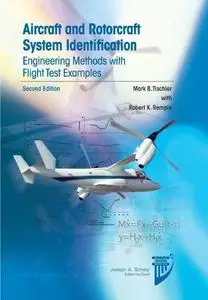Aircraft and Rotorcraft System Identification: Engineering Methods with Flight-Test Examples by Mark B. Tischler
English | PDF | 2012 | 560 Pages | ISBN : 1600868207 | 10.6 MB
Presenting proven methods, practical guidelines, and real-world flight-test results for a wide range of state-of-the-art flight vehicles, "Aircraft and Rotorcraft System Identification, Second Edition" addresses the entire process of aircraft and rotorcraft system identification from instrumentation and flight testing to model determination, validation, and application of the results. In this highly anticipated second edition, authors Tischler and Remple have added dedicated in-depth chapters presenting extended model structures and identification results for large flexible transport aircraft, and the detailed methodology to develop a continuous full flight envelope simulation model from individual system identification models and trim test data. Topics Discussed include: Frequency-response methods that are especially well suited for system identification of flight vehicle models from flight-test data; specific guidelines for flight testing, data analysis, and the proper selection of model structure complexity; and emphasis on the importance of physical insight in model development and applications.



